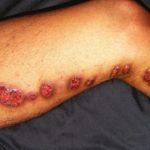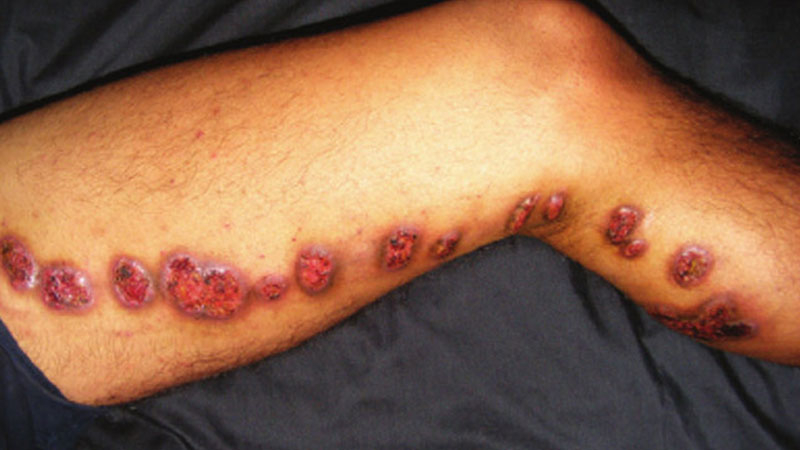 A fungus infection of the skin which causes abscesses.
A fungus infection of the skin which causes abscesses.
Chronic fungal infection of the skin and lymph nodes caused by the fungus Sporothrix schenckii, found in soil and decaying vegetation; it causes skin lesions and subcutaneous lymph nodules in lymph channels. Treatment is by antifungal agents.
A chronic fungal infection caused by a mold that is found on rose or barberry bushes and on sphagnum moss or other mulches, as well as in the soil. Often called gardener’s disease, it occurs when open cuts or sores on the skin make contact with the mold, which is spread via lymphatic fluid and forms small, round masses of tissue on the skin’s surface or deep within the skin. If the infection is not treated, these nodules break down into inflamed, pus-filled cavities in the skin or become open sores. If the infection spreads through the bloodstream, other areas of the body may be affected, particularly the joints.
A chronic fungus infection of the skin and superficial lymph nodes that is caused by Sporotrichum schenckii and results in the formation of abscesses and ulcers.
A chronic granulomatous infection usually of the skin and superficial lymph node, marked by the formation of abscesses, nodules, and ulcers and caused by the fungus Sporothrix schenckii.
A long-term infection triggered by the Sporothrix Schenckii fungus, commonly found on plants. The infection is usually acquired through a cut or abrasion on the skin, making gardeners especially susceptible. An ulcer forms at the wound site, followed by nodules appearing in nearby lymph channels. Typically, an oral solution of potassium iodide effectively treats the infection. In rare cases involving individuals with compromised immune systems, the infection can spread to other body parts and may require treatment with the antifungal medication amphotericin.
Infection caused by a fungus belonging to the Sporothrix genus. This ailment is typically of a subacute or chronic nature and primarily impacts the skin, resulting in slow-to-heal abscesses. It tends to afflict individuals such as farmers, florists, and those involved in soil-related occupations.
